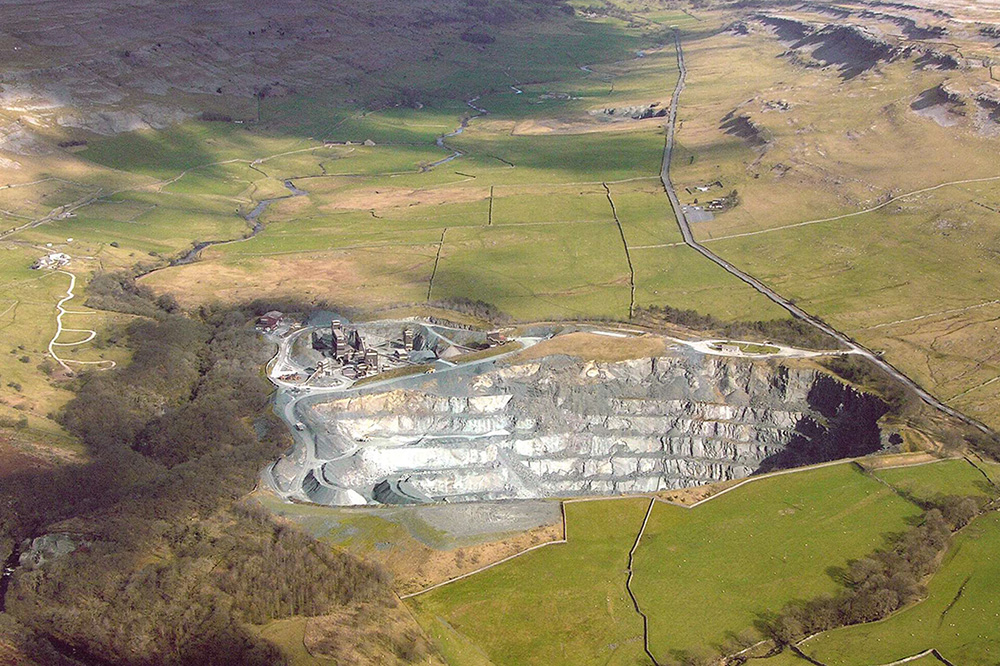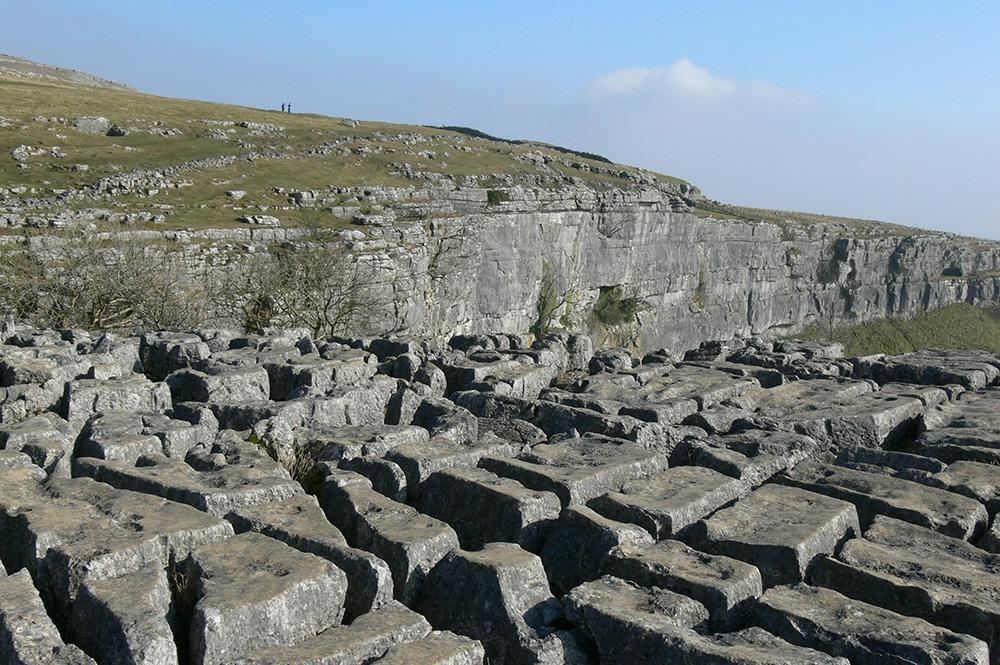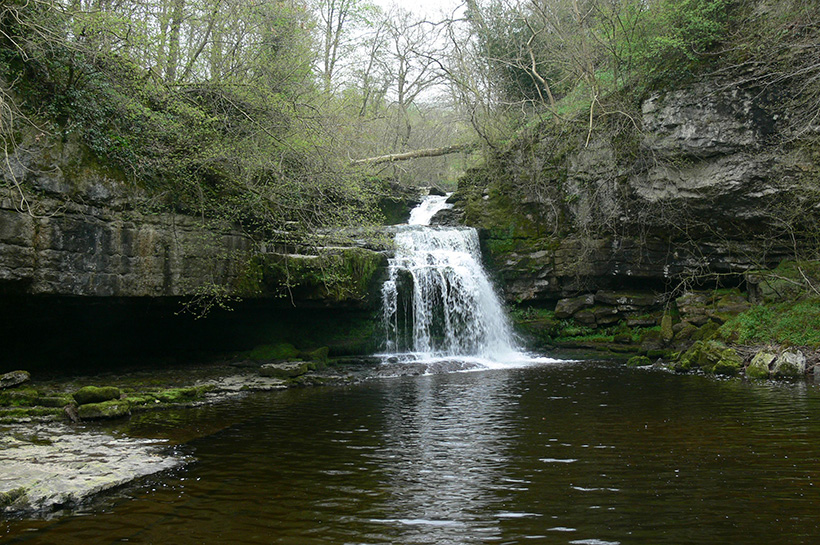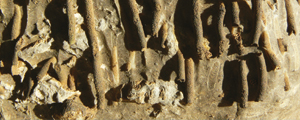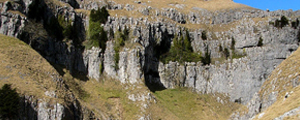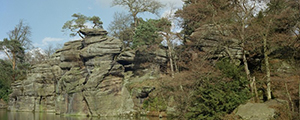The cream to buff coloured limestones known as the Magnesian Limestone (Zechstein Group) were deposited, unconformably, on the older Millstone Grit Group. The limestones form a low west-facing ridge running through the central part of the area from the Selby area, northwards to Ripon and Scotch Corner. The Magnesian Limestone was deposited in a relatively shallow tropical landlocked sea (the Zechstein Sea) extending from north east England to Poland. Due to the landlocked nature of the sea and high temperatures, gypsum and anhydrite (collectively known as evaporites) were produced as the sea-water gradually evaporated and today, apart from exposures in the Ripon area, form extensive underground deposits. Within the Magnesian Limestone the remains of fossil reefs (often including numerous fossil algae, bivalves, gastropods and bryozoans), which grew on the edge of the Zechstein Sea can be found.
